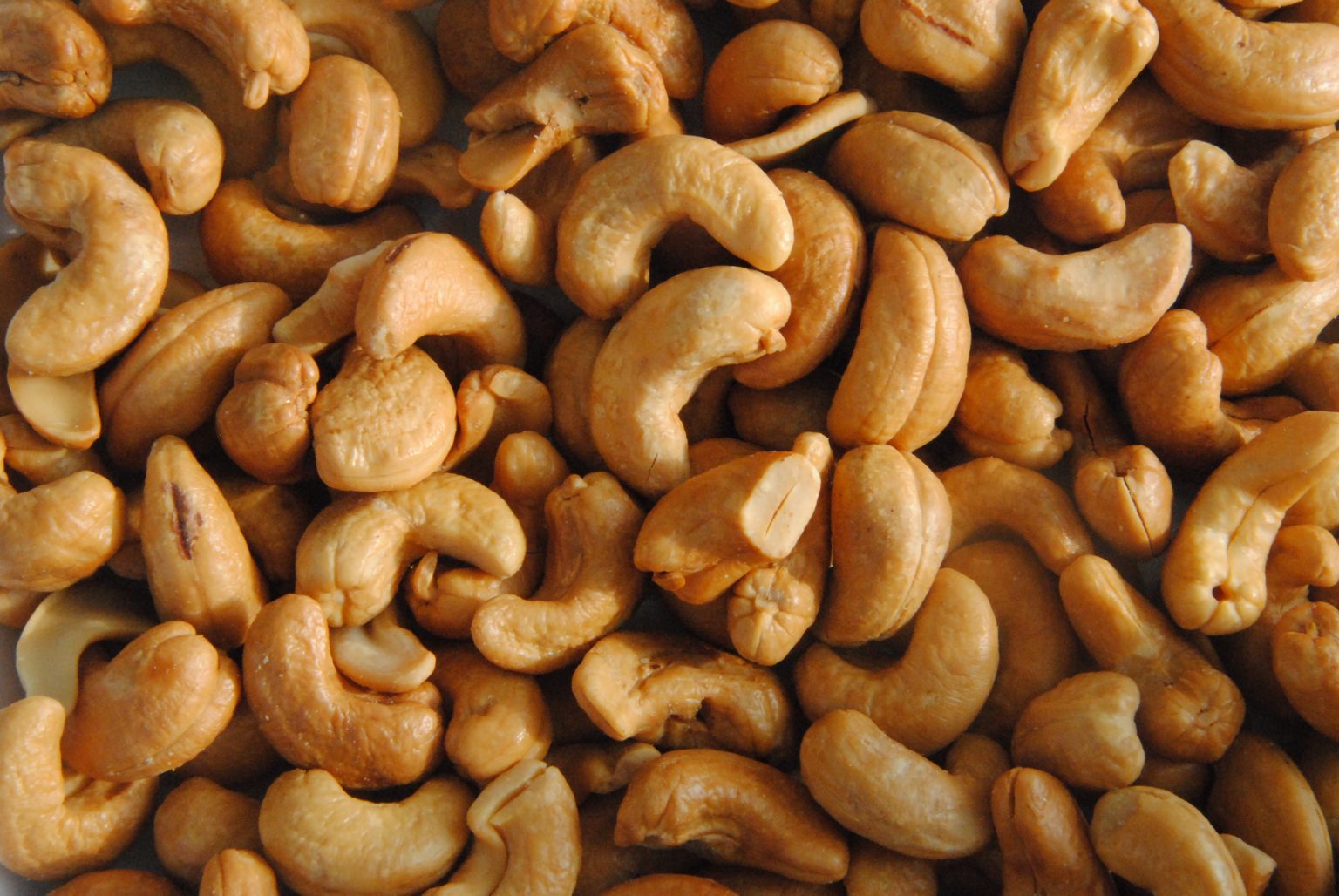Origin of the Cashew
First, what are cashews exactly? Cashews are the seeds of the cashew tree (Anacardium occidentale). The cashew tree is native to the Americas (particularly Brazil) but is now grown in tropical areas worldwide. Cashew nuts are harvested from trees and processed for food and other purposes.
Cashew seeds grow inside what is called a drupe. This means the fruit is composed of a large fleshy part that surrounds a single hard seed. Some other popular examples of drupes are mangoes, cherries, apricots, and peaches.
What About The Cashew Fruit?
When you look at a cashew fruit, you may notice that it consists of two parts: a dark-colored kidney-shaped object and a fleshy light-colored fruit. The kidney-shaped object is the drupe and is the actual fruit of the tree. On the other hand, the apple-like fleshy object above it is called a cashew apple. To repeat: the cashew apple is not the main fruit, the kidney-shaped drupe is. When immature, it can have a green color, but once it does mature, it can turn red or yellow.
Cashew apples are an example of what is called an accessory fruit. This means that unlike most fruits, which develop from the ovaries of flowers, their flesh grows from a different part of the plant. This means that the cashew apple is technically not the “true” fruit of the cashew seed, as mentioned earlier. Instead, the actual “true” fruit of the cashew seed is the drupe.
Interestingly enough, because the cashew apple is merely an accessory fruit, the seed grows independently from it. In fact, as seen in the image above, this means that when cashews grow, the drupe develops before the accessory fruit.
Are Cashew Nuts Really Nuts?
The answer to that question is no! Cashew nuts are not nuts at all. Instead, they are classified as drupes. Although they are referred to as nuts in the culinary world because of their color, taste, and texture, they are not considered true nuts. True nuts, such as acorns and hazelnuts, have shells and seeds that are both hard and dry. Drupes, on the other hand, have fleshy exteriors. Because cashews fall into the latter category, they are not considered true nuts.
What Else Should I Know About The Cashew Fruit?
Despite not being the main fruit of the cashew tree, the cashew apple is still edible and can be used for culinary purposes. The taste of the cashew apple is a mix of sweet and sour, as if you are eating an apple. It should be noted that the cashew apple is perishable and can spoil within a day or two of harvesting.
While we enjoy cashews regularly, cashew nuts cannot be eaten raw. This is because the cashew drupe contains a substance called urushiol. This is the same substance found in poison ivy, and like that plant, exposure can cause rashes. To be made suitable for human consumption, the seeds first need to be removed from the fruit. The seeds are then dried in the sun or in a facility to remove traces of urushiol. Next, the seeds are roasted to eliminate any remaining urushiol. The seeds can be roasted multiple times to add flavor before finally being ready to be eaten.
The next time you incorporate it in your cakes or cookies, spare a thought for the cashew fruit. The story of the nut, from growth to harvesting and finally processing, is quite a journey to remember.

